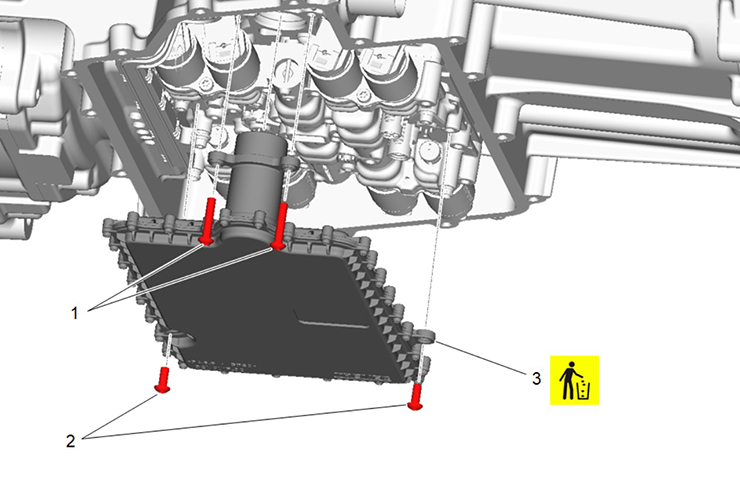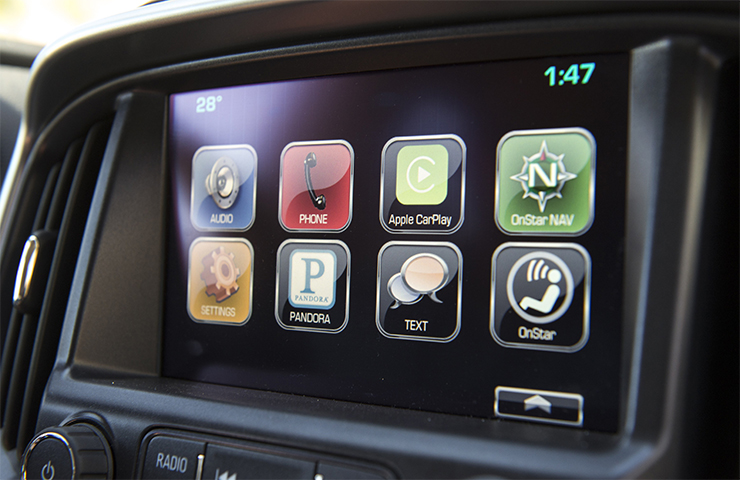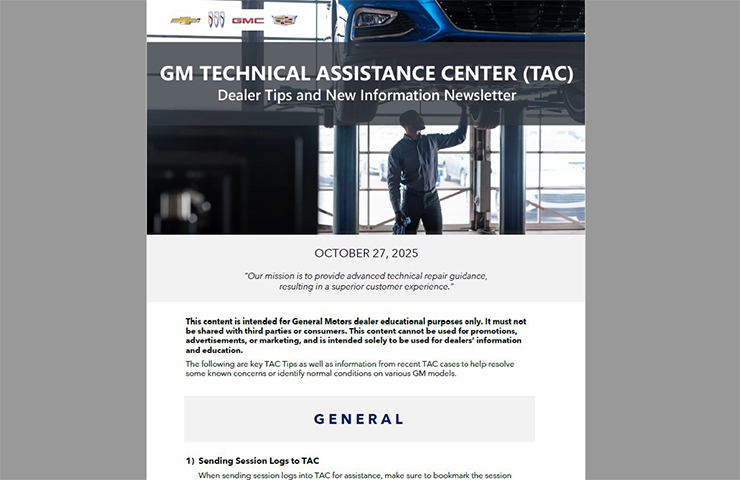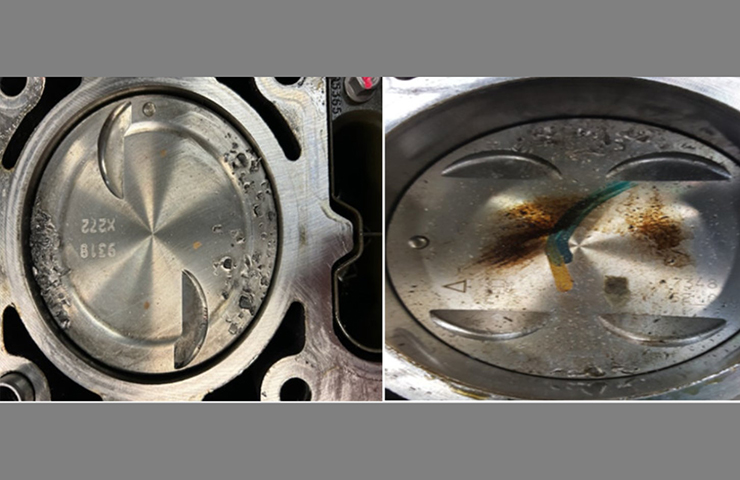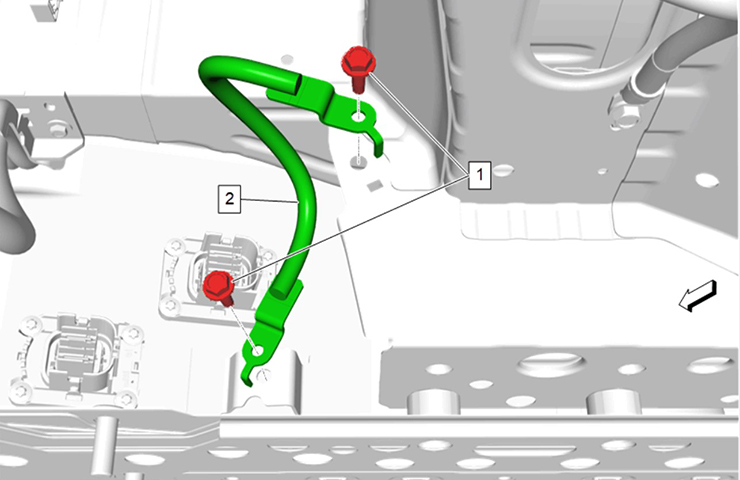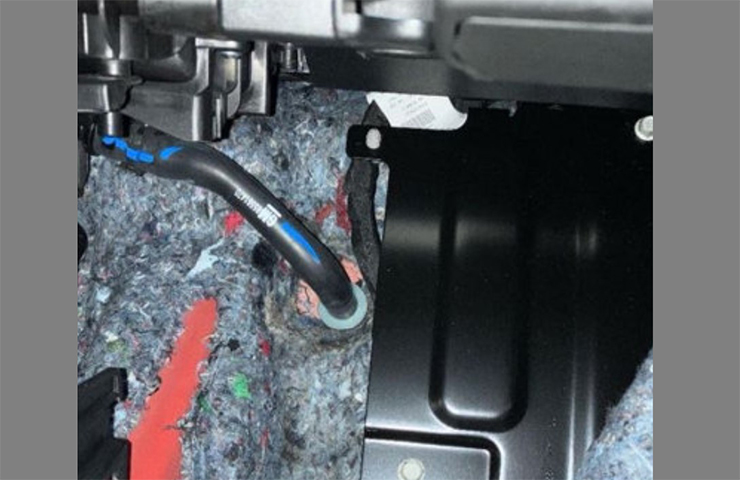GM Electric Vehicles (EV), such as the LYRIQ, Blazer EV and Silverado EV, are equipped with a high-voltage battery system for vehicle propulsion and a 12V battery system that is used to power a number of electrical loads, including the instrument cluster and infotainment, lighting, rear defrost and heated seats. (Fig. 3)
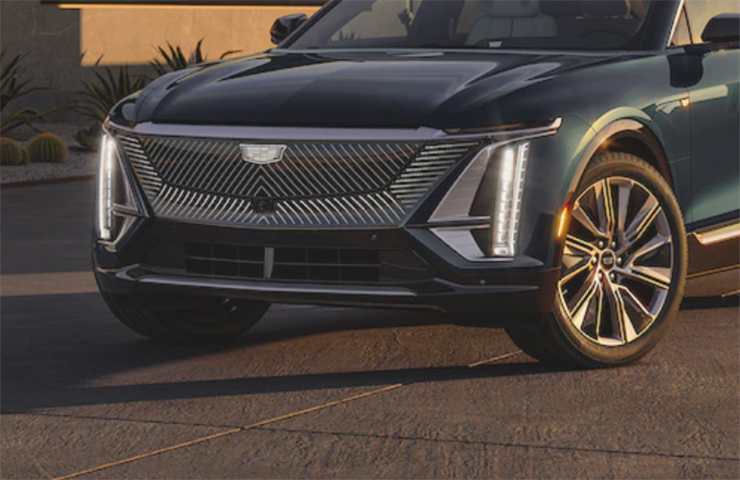 Fig. 3
Fig. 3
Here’s a look at the 12V battery and several related features and their role as part of the charging system. The purpose of the charging system is to maintain the 12V battery charge and vehicle loads. The main difference between a conventional generator charging system and this system is that the generator has been replaced by the T18 Battery Charger, which provides the power to charge the battery from the high-voltage system.
Charging system modes of operation include:
- Pre-Sleep Mode (Active when the vehicle is off)
- Enhanced Battery Support Mode (Charging the 12V battery when off; active when the vehicle is off)
- Transport/Logistics Mode
- Normal Mode
- Battery Sulfation Mode
- Battery Saver Mode
- Headlamp Mode
- Voltage Reduction/Fuel Economy Mode
TIP: Only disconnect the 12V battery/system as indicated by a service procedure. In addition, minimize the length of time the 12V battery/system is disabled and the vehicle is in a disassembled condition. The High-Voltage (HV) Battery Safety Monitoring System will be disabled when the 12V battery is removed or disconnected. Before working on any high-voltage system, be sure to wear the proper Personal Protection Equipment. For more information, refer to Bulletin #22-NA-141: Information on Battery Service Guide for Electric Vehicles (EV).
To check the High-Voltage Battery state of charge (SOC) during service, do not use the Range value shown on the instrument cluster. Refer to the data parameter Hybrid/Electric Vehicle Battery Pack Energy Storage Remaining (Fig. 4) from the Battery Energy Control Module.
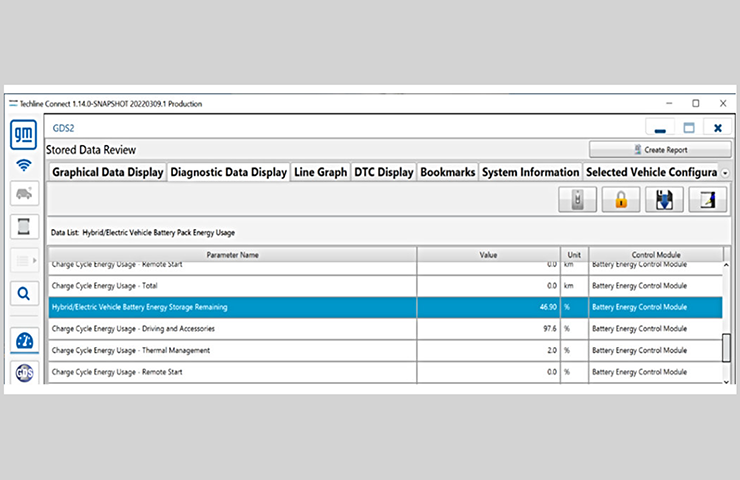 Fig. 4
Fig. 4
Pre-Sleep Mode
When the vehicle is turned off, the Body Control Module (BCM) will command the T18 Battery Charger to run for a minimum of 10 minutes with the high-voltage contactors closed. The Battery Charger may run until the battery is at an acceptable charge, but also may run continuously if there is a battery issue or drain. The high-voltage battery will stop maintaining the 12V battery at 10% High Voltage State of Charge
Enhanced Battery Support Mode
When the vehicle is asleep for 11 hours or if the BCM is woke up by any internal or external event, the Enhanced Battery Support Mode (EBSM) will activate. The EBSM will observe the 12V battery state of charge and, if it is too low, the high-voltage contactors will be requested closed. The BCM will send a request to the K16 Battery Energy Control Module (Fig. 5, #1) to command the T18 Battery Charger (Fig. 5, #4) to run until the 12V battery is charged to a value between to 76.5% to 83.5%, or the T18 Battery Charger has run for a maximum of 2 hours with the high-voltage contactors closed, whichever occurs first.
 Fig. 5
Fig. 5
Battery Maintenance Mode
When the vehicle charge cord is plugged in, the T18 Battery Charger will check the 12V battery every 6 hours if the ignition is off. If the voltage is below a temperature dependent threshold ranging from 12.1 (cold) to 12.4 (warm) volts, the Battery Charger will send the voltage set point to the K16 Battery Energy Control Module 1. Battery Maintenance Mode will charge the 12V battery for 2-3 hours.
High Voltage Service Lockout
Enabling the High-Voltage Service Lockout (HVSL) performs two functions: it opens the electrical connections and it prevents the closing of those connections using a locking device. (Fig. 6)
The high-voltage contactors may remain closed with the vehicle off to support the 12V battery and electrical loads. Do not open the HVSL and force the high-voltage contactors open when they are closed and under load.
 Fig. 6
Fig. 6
Pre-Sleep occurs every time the vehicle power mode state transitions to the Power Mode Off state, which starts a 10-minute timer. The high-voltage contactors will remain closed to support the 12V battery and any other electrical loads until the 10 minutes have elapsed.
When the vehicle power mode state is off, Enhanced Battery Support Mode (EBSM) monitoring occurs once every 11 hours, or sooner if the BCM is woke up by any internal or external input signal. Once 12V battery support has begun, the EBSM mode has a 2-hour timer followed with a 15-minute rest period. The battery charging may continuously function between the 2-hour/15-minute rest period provided the 12V battery state of charge remains too low and the BCM does not return to its sleep state. EBSM monitoring may be terminated before the 2-hour time limit if the desired 12V battery state of charge value is met.
To determine if the high-voltage contactors are closed and under load while the vehicle power mode state is off, measure the voltage at the 12V battery.
Battery Negative Cable Disconnection and Connection
Before disconnecting the battery negative cable, check if the Battery Maintenance Mode is inactive. The mode can be active with the ignition off regardless of whether the vehicle charge cord is plugged in or not. When the mode is active, the T18 Battery Charger will energize the 12V battery cables and charge the 12V battery.
Check the 12V battery voltage with a digital multimeter before disconnecting any battery cable leads. If the voltage is 13.5 volts or above, the Battery Maintenance Mode is active. Technicians must wait for the Battery Charger to deactivate before disconnecting the battery negative cable.
TIP: Disconnecting the battery cables while Battery Maintenance Mode is active may result in an electrical shock or a burn from hot battery cable leads.
Before removing the battery negative cable, engage the High-Voltage Service Lockout (HVSL). (Fig. 7) When the lockout is engaged, the indicator tab wording changes from ON to OFF.
Place a tie strap or the High Voltage (HV) Disable Padlock through the exposed HVSL hole to prevent improper re-engagement. When using the HV Disable Padlock, be sure to remove the key and store it in a safe place.
 Fig. 7
Fig. 7
After disconnecting the 12V battery negative cable, wait 5 minutes to allow the high-voltage capacitors to discharge before continuing to disconnect any high-voltage connectors.
TIP: The Battery Monitor Module is attached directly to the battery negative terminal. It determines the battery condition by calculating the battery SOC, functions, and state of health. If only disconnecting the battery negative cable (Fig. 8, green circle), do not disconnect the Battery Monitor Module electrical connector at the module and do not disconnect the module at the battery negative post, or else a module learn will be required to calibrate the module.
 Fig. 8
Fig. 8
Once the 12V Battery is disconnected and reconnected, it will cause the BCM to use a 65% default SOC. After 4 ignition cycles, the BCM will exit the default SOC behavior and begin integration of the SOC from that point. If vehicles with the VIP architecture are not allowed to sit more than 4 hours (or 8.5 hours for vehicles with the Global A architecture) without being disturbed or woke up to reset the monitored state of charge in the BCM, the SOC will not be updated to reflect the new value.
Refer to Hybrid/EV High Voltage Energy Storage and Starting, Charging and Low Voltage Energy Storage in the appropriate Service Information for additional information.
– Thanks to Marco Salcedo






